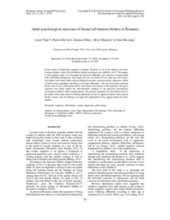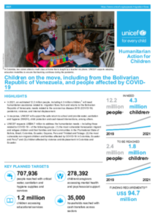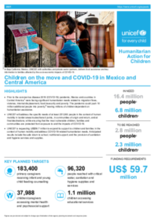Displaying 131 - 140 of 810
The purpose of Policies and Practice: A Guide to Gender-Responsive Implementation of the GCM is to provide clear, concrete and practical guidance to governments and other key stakeholders on gender-responsive implementation of the Global Compact for Safe, Orderly and Regular Migration (GCM). Building on the gender-responsive approach outlined in the guiding principles of the GCM, this guide prioritizes the specific needs, challenges and vulnerable situations of women, girls and gender non-conforming people at all stages of migration due to their increased vulnerabilities to human rights violations and gender-based discrimination. It takes into consideration the multiple and intersecting forms of discrimination they may face while highlighting the positive contributions that they make in countries of origin, transit, and destination.
This guide analyses the Global Compact for Safe, Orderly and Regular Migration (GCM) and the Global Compact on Refugees (GCR) through a child rights lens and outlines the measures foreseen in these documents (the Global Compacts) for the protection of the rights of the child.
This guidance note aims to address the migration data gaps in a manner relevant to all stakeholders, and promotes a whole-of-society approach. It is also meant to help operationalize IOM’s Migration Data Strategy and includes recommendations on enhancing gender indicators and gender-based methods in data production, protection, dissemination and use. The note provides succinct information on the extent to which gender is captured through macrolevel global data sets, along with a discussion of key issues relevant to gender and migration data.
The purpose of this empirical study is to investigate the perceived difficulties and outcomes of young adults with a left behind background.
This brief article from UNICEF describes UNICEF's work with partners in Côte d’Ivoire to assist children on the move during the COVID-19 pandemic, "providing them with psychosocial support through counselling and drama therapy, as well as access to education, shelter, meals, clean water and sanitation facilities. UNICEF also works with partners to help reunite children on the move with their families."
Using survey data collected in 2010 from Ghanaian school children, this study investigates variations in children’s durable goods and private utilities when parents migrate internally or internationally compared to a control group of children who live with their parents.
This edition of Humanitarian Action for Children – UNICEF’s annual humanitarian fundraising appeal – describes the ongoing crises affecting children on the move, including from the Bolivarian Republic of Venezuela, and people affected by COVID-19; the strategies that UNICEF is using to respond to these situations; and the donor support that is essential in this response.
This edition of Humanitarian Action for Children – UNICEF’s annual humanitarian fundraising appeal – describes the ongoing crises affecting children on the move and COVID-19 in Mexico and Central America (including unaccompanied and separated children); the strategies that UNICEF is using to respond to these situations; and the donor support that is essential in this response.
In this World Bank Blog Post, Saskia Blume and Nour Moussa of UNICEF's Children on the Move Team describe how "millions of ‘children left behind’ are taking the brunt of this fallout as their family members who moved internally or abroad in hopes of sustaining them, cut down on remittances" as a result of the COVID-19 pandemic.
A cross-sectional study was conducted in five counties of five provinces in China to investigate the effects of age at separation and duration of maternal separation on the early development of left-behind children.






